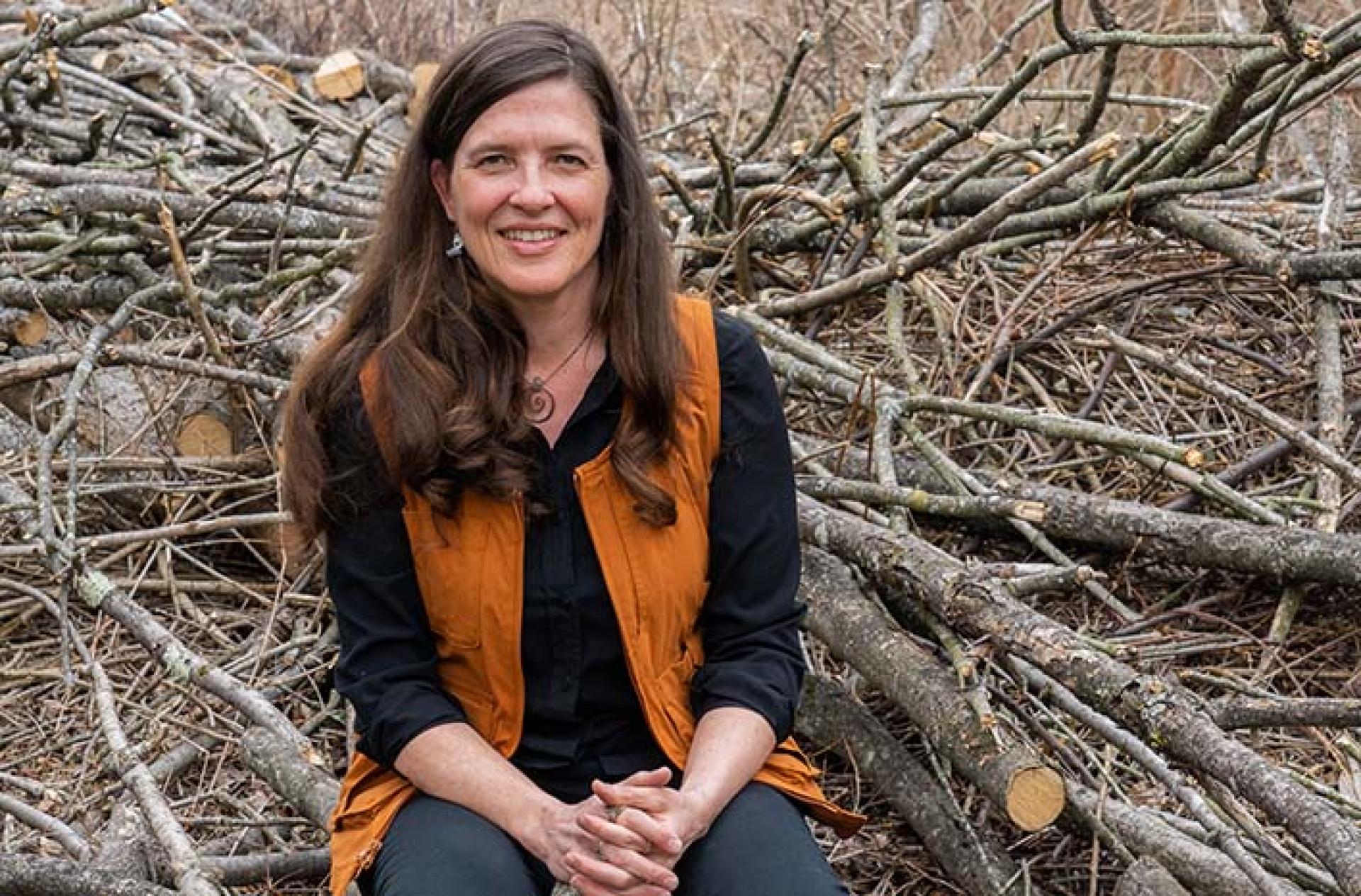You are here
Be A Better Gardener: Wildscaping With Nancy Lawson
Be A Better Gardener: Wildscaping With Nancy Lawson
by Thomas Christopher
It has been a long time since I have come upon a piece of nature writing that affected me as powerfully as Nancy Lawson’s recent book, Wildscape. Somehow, I had missed the 2017 triumph of her first book, The Humane Gardener, which earned enthusiastic reviews everywhere from the New York Times to the Yellowstone [Montana] Master Gardeners Newsletter. The two volumes are complementary. The first, The Humane Gardener, makes the case for coexistence with wildlife and details how readers can adjust their landscapes not only to support a healthy biodiversity of wild creatures but also to enable comfortable sharing. The subtitle of Wildscape, “Trilling Chipmunks, Beckoning Blooms, Salty Butterflies, and other Sensory Wonders of Nature,” tells the reader that this has a slightly different focus, one of savoring and learning from the remarkable encounters you will have in a humane garden.
As the daughter of a plant pathologist, Nancy Lawson grew up surrounded by plants and gardens. She developed her writing and researching skills as a newspaper reporter before finding her niche at The Humane Society of the United States, where she started as the editor of Animal Sheltering magazine and ultimately rose to become vice president of content.
During this time, Nancy experienced an epiphany, she told me in a recent conversation. This happened when she reported a story about the management of Canada geese in public parks and at waterfront properties. Canada geese like to graze on expanses of lawn, especially those close to any sort of body of water, leaving the turf dotted with slimy green manure. The human reaction had been a classic case of humanity against nature, with mass slaughters and later the less inhumane but still hostile expedients of harassment of the geese by border collies and the oiling of their eggs to prevent them from hatching.
Nancy, however, learned from colleague John Hadidian, the senior scientist for wildlife protection at The Humane Society of the United States, that a slight modification of the landscape could achieve the same goal. A fear of land-based predators means that the geese prefer easy access and open sightlines to the safety of the water. Edging the water with a band of native grasses and flowers not only increases the biodiversity of the landscape by attracting native birds and bugs, and protects the adjacent body of water from storm runoff laced with lawn chemicals and fertilizers, it also very effectively deters the geese.
Nancy began a journey to explore other ways that we could amend our landscaping to enhance coexistence with wildlife. She consulted with a wide range of scientists to deepen her understanding of how nature functioned in our backyards and local ecosystems. Nancy also began replanting her own two-acre-plus home landscape in Maryland with native plants and observing what animals they attracted and how the animals and plants interacted. Over time she became a master gardener, a master naturalist, and a certified Chesapeake Bay Landscape Professional as well as an in-demand habitat consultant.
In promoting her innovative take on landscaping, Nancy relies on the carrot rather than the stick as a motivator. Wildscape, for example, is a celebration of the wonders that she has experienced in her own garden. The book is divided into five sections, each focused on a different sense, with an emphasis on the very different ways that wildlife experience and interact with smells, sounds, tastes, touch, and sight.
In the first section, “The Scentscape,” for example, Lawson relates how she observed a fritillary caterpillar firing pellets of fecal material “like a cannon,” to banish a scent that would attract predatory wasps, and how that, along with many other incidents, motivated her to explore the new field of “aeroecology,” a definition of how scents are perceived in nature and how they influence wildlife and plant interactions. Gardeners may not perceive all the odors, but their actions have a big impact. The powerful scents released by lawn chemicals and diesel exhaust, for example, by overwhelming the natural odors can bring the normal interactions to a halt.
Wildscape is sure to inspire any gardener to experience their own plot with a far greater richness. It brings an understanding that inviting wildlife into your landscape is rewarding not only for these new residents but also for you. I think it’s a must-read.
To listen to the rest of my conversation with Nancy Lawson, log onto the Berkshire Botanical Garden’s “Growing Greener” podcast at www.berkshirebotanical.org.
Be-a-Better-Gardener is a community service of Berkshire Botanical Garden, located in Stockbridge, Mass. Its mission, to provide knowledge of gardening and the environment through a diverse range of classes and programs, informs and inspires thousands of students and visitors each year. Thomas Christopher is a volunteer at Berkshire Botanical Garden and is the author or co-author of more than a dozen books, including Nature into Art and The Gardens of Wave Hill (Timber Press, 2019). He is the 2021 Garden Club of America's National Medalist for Literature, a distinction reserved to recognize those who have left a profound and lasting impact on issues that are most important to the GCA. Christopher’s companion broadcast to this column, Growing Greener, streams on WESUFM.org, Pacifica Radio and NPR and is available at berkshirebotanical.org/growinggreener.
Help Our Garden Grow!
Your donation helps us to educate and inspire visitors of all ages on the art and science of gardening and the preservation of our environment.
All donations are 100 percent tax deductible.


